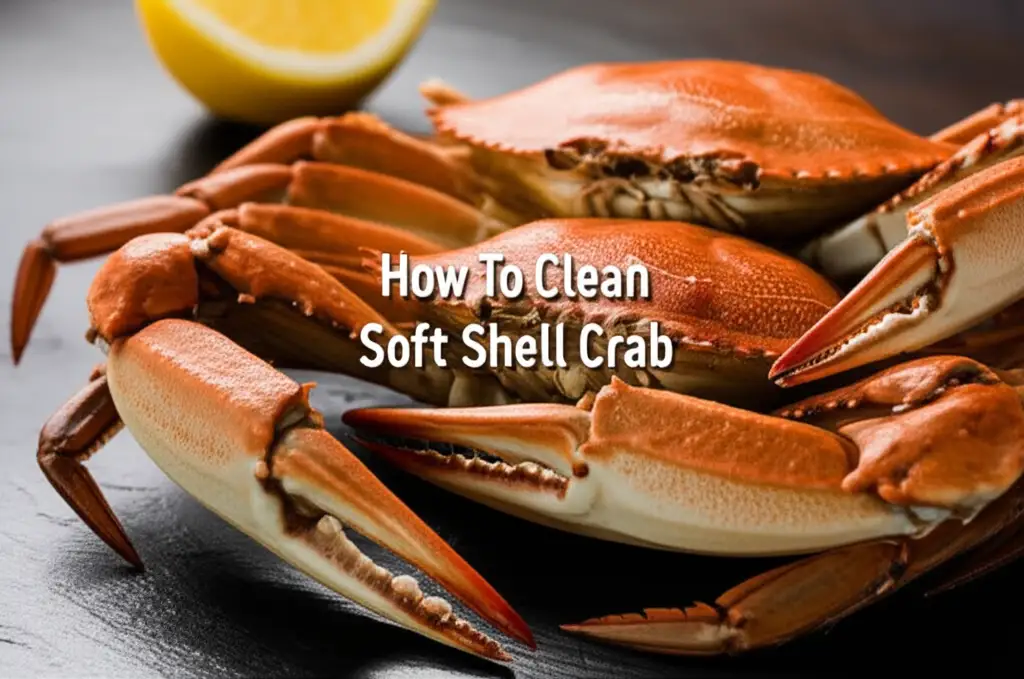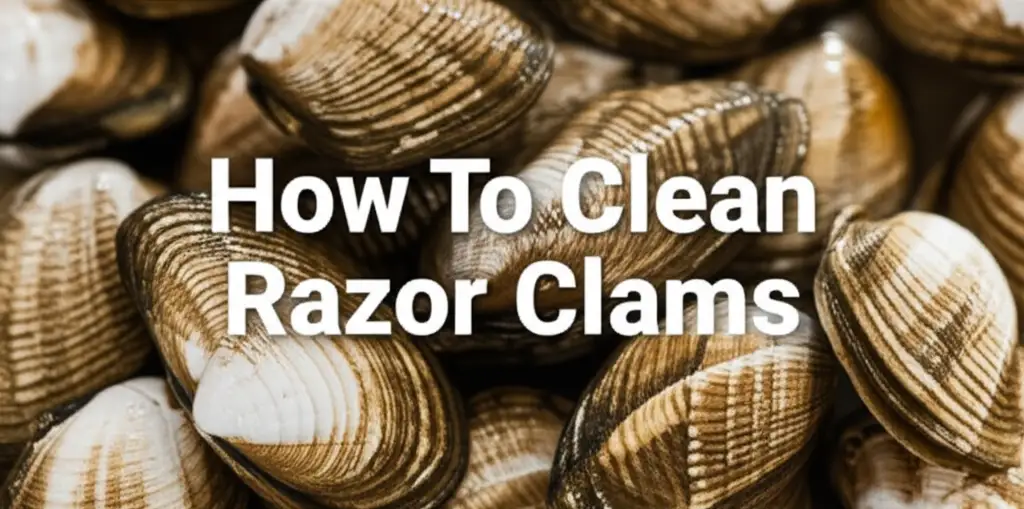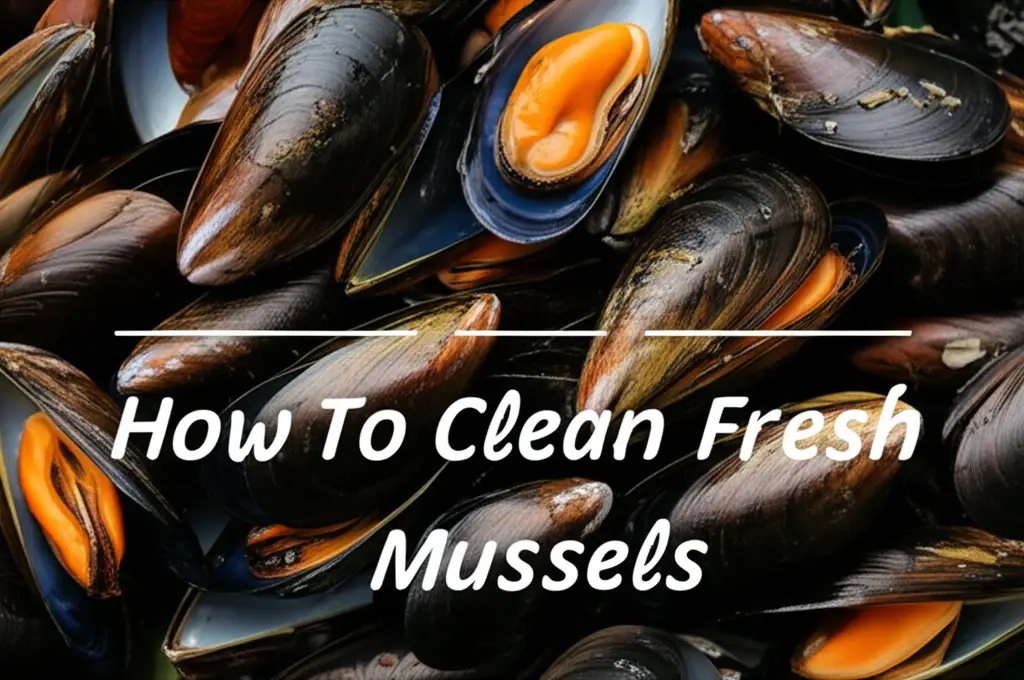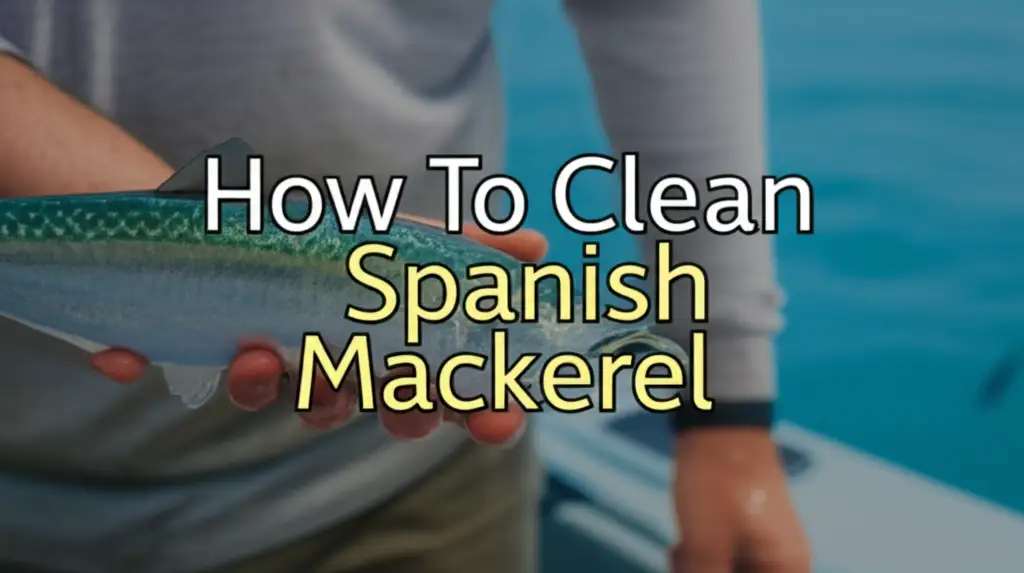· Seafood Preparation · 15 min read
How To Clean Soft Shell Crab

Mastering Soft Shell Crab Cleaning: Your Essential Guide
Imagine biting into a perfectly cooked soft shell crab. It offers a unique texture and rich flavor. Many home cooks feel nervous about preparing these delicacies. However, learning how to clean soft shell crab is a simple process. It ensures your meal is both safe and incredibly delicious. This guide makes cleaning easy for everyone.
Soft shell crabs are a seasonal treat. They appear when crabs shed their hard outer shells. This natural process leaves them with a new, soft exterior. This new shell is entirely edible. You eat the whole crab, unlike hard shell varieties. Proper cleaning enhances the flavor and enjoyment. It removes parts that are not tasty or digestible. We will cover necessary tools and a simple step-by-step cleaning method. You will also learn about handling, storage, and tips for best results. Prepare to confidently serve a soft shell crab feast.
Takeaway
To successfully clean soft shell crab:
- Gather essential kitchen tools like sharp shears and a bowl of ice water.
- Remove the gills (dead man’s fingers) from under the top shell.
- Snip off the mouth and eyes from the front.
- Trim the abdominal flap from the underside.
- Rinse crabs quickly and pat them dry before cooking or storing.
Clear, Concise Answer
To clean soft shell crab, use kitchen shears to remove gills located under the top shell, snip off the eyes and mouth from the front, and trim the triangular abdominal flap from the underside. This quick process prepares the crab for cooking, ensuring a delicious and edible meal.
Understanding Soft Shell Crab: A Culinary Delight
Soft shell crabs are a true seasonal treat. They are crabs caught shortly after molting. During this time, they shed their hard outer shell. A new, soft shell forms underneath. This new shell is very tender. It is completely edible when cooked. This makes soft shell crabs unique in the culinary world.
These crabs offer a different experience compared to their hard-shelled cousins. You do not need to pick out the meat. Instead, you eat the whole crab, shell and all. The flavor is sweet and delicate. Many people deep-fry or pan-fry soft shell crabs. This makes the soft shell crispy. It creates a wonderful contrast with the tender meat inside. The appeal of soft shell crab comes from its texture and rich taste. You can enjoy them in sandwiches, salads, or as a main dish.
The soft shell season is typically short. It runs from spring through late summer. This limited availability adds to their special status. Buying them fresh is always best. Look for active crabs if buying live. They should smell clean, like the ocean. Avoid any crabs with a strong, off-putting odor. Freshness is key for the best taste. Properly cleaning these crabs is the first step. It gets them ready for your favorite recipes. I find that starting with fresh crabs makes all the difference.
Essential Tools for Cleaning Soft Shell Crab
Cleaning soft shell crab is straightforward. You only need a few basic kitchen tools. Having the right tools ready makes the process smooth. It helps you work efficiently. I always gather my equipment before I start. This saves time and keeps my workspace organized.
First, you need a good pair of kitchen shears. These are sharp scissors designed for food. They make precise cuts easy. You will use them to remove the gills and trim other parts. Standard kitchen scissors might work, but shears are stronger. They handle the crab’s structure better. Look for shears with comfortable handles. This helps when cleaning multiple crabs.
Next, have a shallow bowl ready. Fill it with ice water. You will place the cleaned crabs into this water briefly. This helps firm them up slightly. It stops any further muscle contractions. This step is important if you clean several crabs at once. It keeps them chilled before cooking. A small cutting board is also useful. It provides a stable surface for trimming. I prefer a non-porous board for seafood. It is easier to clean thoroughly afterwards. Just like you would clean surfaces after preparing other foods, maintaining a clean work area is crucial. Consider how you might clean the bottom of a pan after cooking; similarly, keep your crab cleaning tools and surfaces pristine.
Finally, keep plenty of paper towels nearby. You will use these to pat the crabs dry. Dry crabs cook better. They get crispier when fried. Excess moisture can lead to steaming instead of frying. I also have a separate bowl for discarded crab parts. This keeps my main work area clean. These simple tools ensure a quick and effective cleaning process.
The Step-by-Step Process: How to Clean Soft Shell Crab
Cleaning soft shell crab is easier than you think. This process takes only a minute or two per crab. It ensures your crab is ready for cooking. I follow these steps every time I prepare them. This method gives me consistent, excellent results.
The first step is to hold the crab firmly. Position it so its back is facing up. You will see the shell extending slightly past the body. This part is easy to lift. Use your thumb or a small knife to gently lift the top shell. It is like opening a small lid. The shell lifts easily near the eyes. Be careful not to tear the body. Just lift enough to see underneath.
Once the top shell is lifted, you will see the gills. They are feathery, grayish structures. These gills are often called “dead man’s fingers.” They are not poisonous, but they taste bad. They have a gritty texture. I always remove them completely. Use your kitchen shears. Snip them off on both sides of the crab. They come off easily with a single cut. Discard these parts. This step makes the crab much more pleasant to eat. Think of it like removing unwanted sediment from a system to improve its function. Much like removing sediment out of a well ensures clean water, removing these gills ensures a clean-tasting crab.
Removing the Gills (Dead Man’s Fingers)
The gills are crucial to remove. They are located on each side of the crab’s body. They sit just under the top shell flap. You will see them clearly once you lift the shell. They look like dark, feathery plumes. Some people call them “spongy.” They filter water for the crab. They are not digestible for humans.
To remove them, hold the crab in one hand. Use your other hand to lift the shell gently. Take your kitchen shears. Carefully snip along the base of the gills. Cut them away from the body. Make sure to get all of them. There are typically two sets on each side. Each set looks like a small, feathery branch.
Discard these gills immediately. I put them in a separate discard bowl. This keeps my workspace clean. Removing the gills is a key part of the cleaning process. It prevents an unpleasant gritty taste. It makes the soft shell crab truly enjoyable to eat. This step is similar to cleaning a filter in a dishwasher to ensure everything runs smoothly and cleanly.
Trimming the Mouth and Eyes
After removing the gills, turn your attention to the front of the crab. You will see its mouth and eyes. These parts are located right at the very front edge. They are small but noticeable. The eyes protrude slightly. The mouth is a small, hard area just below them. These parts are also not edible. They can be hard and unpleasant to bite into.
To trim them, position your kitchen shears. Place the tip of the shears just behind the eyes. Make a straight cut across the front of the crab’s head. Cut about a quarter of an inch back from the eyes. This single cut removes both the eyes and the mouthparts. It is a quick and efficient snip.
The cut part will be very small. Discard this piece. This step ensures there are no hard, unappetizing bits in your finished dish. It makes the crab fully enjoyable. I find this quick trim always improves the eating experience.
Snipping the Abdominal Flap
The final step in cleaning is addressing the abdominal flap. Turn the crab over onto its back. You will see a small, triangular flap on its underside. This flap is located at the lower end of the crab’s body. It is often tucked in. This flap is also known as the “apron.” It is a part of the crab’s reproductive system.
This flap is not harmful. However, it is generally removed for better presentation and texture. It can become tough or stringy when cooked. I always snip it off for a cleaner presentation. Use your kitchen shears. Simply snip off this flap where it joins the body. It comes off easily with a single cut.
Discard this small piece. Your soft shell crab is now fully cleaned. It is ready for rinsing and drying. This complete cleaning process makes the crab perfect for cooking. It is a small but important detail. Just like you would clean parts of a hot tub shell for overall function, cleaning this flap contributes to a fully prepared and enjoyable crab.
Proper Handling and Storage of Cleaned Soft Shell Crab
Once you clean your soft shell crabs, proper handling is essential. It keeps them fresh and safe until you cook them. I always make sure to handle them gently. Their new shells are delicate. Rough handling can damage them.
After cleaning each crab, give it a quick rinse under cold running water. This washes away any remaining loose bits. It also removes any juices. Do this quickly. You do not want the crab to absorb too much water. A brief rinse is enough. Then, immediately pat the crab very dry with paper towels. I press gently to absorb all surface moisture. Dry crabs crisp up better when cooked. Moisture can make them steam instead of fry.
If you plan to cook the crabs right away, they are ready. If not, you need to store them properly. Place the dried crabs in a single layer. Use a shallow dish or tray. Cover the crabs with damp paper towels. Then, cover the entire dish tightly with plastic wrap. This keeps them moist without making them wet. Store them in the coldest part of your refrigerator. I usually place them at the very back.
Soft shell crabs are best cooked within 24 hours of purchase or cleaning. They are very perishable. Eating them fresh ensures the best flavor and texture. Do not store them for more than a day or two. Always check for any off odors before cooking. A fresh crab should smell like clean ocean air. Proper storage also extends to maintaining general kitchen hygiene around your refrigerator, similar to how one might clean under a refrigerator to prevent hidden issues and maintain overall cleanliness.
If you cannot cook them within a day, consider freezing them. Freezing requires specific steps. You should blanch them first. This helps preserve their texture. Then, wrap each crab tightly in plastic wrap. Place them in an airtight freezer bag. This prevents freezer burn. Cleaned soft shell crabs can last up to a month in the freezer. However, fresh is always superior.
Tips for a Pristine Clean and Delicious Results
Getting your soft shell crabs perfectly clean makes a big difference. It ensures a delightful eating experience. I have a few tips that help me achieve the best results every time. These small details can elevate your dish.
Firstly, work quickly and efficiently. Soft shell crabs are best when cleaned just before cooking. The less time they spend out of refrigeration, the better. Have all your tools ready beforehand. This speeds up the process. I line up my crabs and work through them one by one. This organized approach helps maintain freshness.
Secondly, do not over-rinse the crabs. A quick, gentle rinse is sufficient. Too much water can make them soggy. It can also dilute their natural flavor. Remember, the goal is to remove loose debris, not to soak them. A gentle stream of cold water is perfect. Pat them thoroughly dry immediately after rinsing. This is crucial for achieving a crispy crust when you cook them. I use several layers of paper towels for this step. Ensuring surfaces are thoroughly dried is a common practice in many cleaning contexts, even when cleaning a shower with vinegar, dryness often follows the cleaning.
Thirdly, be gentle with the crab’s shell. The new shell is soft, but it can tear. Handle the crab carefully during the cleaning process. Support its body as you lift the top shell or snip parts. Avoid squeezing too hard. A damaged shell might affect how it cooks and presents. The shell provides a lot of the texture. Keeping it intact is important.
Finally, consider the quality of your crabs. Start with the freshest possible crabs. This makes the cleaning process more pleasant. It also ensures the best final taste. A fresh crab smells clean and has firm, plump meat. I always check their appearance and smell before I start cleaning. These tips help me prepare soft shell crabs that are not only clean but also incredibly delicious.
Common Mistakes to Avoid When Cleaning Soft Shell Crab
Cleaning soft shell crab is straightforward, but some common errors can impact your final dish. Being aware of these mistakes helps you achieve perfect results. I learned these through experience. Avoiding them saves time and ensures a better meal.
One common mistake is not removing all the gills. These “dead man’s fingers” are on both sides of the crab. If you miss some, they can leave a bitter or gritty taste. Always lift the top shell wide enough. Look carefully for all the feathery parts. I double-check each side before moving on. Make sure your shears cut clean. Leaving any behind lessens the appeal of the crab.
Another error is over-rinsing the crabs. Some people might submerge them in water. This is not good. Soft shell crabs absorb water easily. This makes them soggy. Soggy crabs do not crisp up well when fried. They become limp and unappetizing. A quick rinse under running water is all you need. Focus on drying them completely afterwards. Remember, moisture is the enemy of a crispy crab.
Forgetting to trim the eyes and mouth is also common. These parts are small but hard. Biting into them unexpectedly is unpleasant. It can ruin the experience of eating a soft shell crab. A swift snip behind the eyes removes both at once. It is a small step with a big impact on enjoyment. Always make this cut.
Lastly, do not store cleaned crabs improperly. Leaving them exposed to air in the fridge makes them dry out. Placing them in too much water makes them soggy. Always cover them with damp paper towels. Then, wrap the dish tightly. Cook them within a day if possible. Old or poorly stored crabs can develop an off-flavor. Always trust your nose. If they smell strong or ammonia-like, discard them. Proper care ensures your cleaning efforts are not wasted.
FAQ Section
Can you eat soft shell crab without cleaning it?
Technically, you can eat a soft shell crab without cleaning. However, it is not recommended. The gills (dead man’s fingers) are unpalatable and gritty. The eyes and mouth parts are hard. The abdominal flap can be stringy. Cleaning improves flavor, texture, and overall enjoyment. It makes the entire crab edible and delicious.
What happens if you don’t clean soft shell crab?
If you do not clean soft shell crab, you will be eating the gills, eyes, mouth, and abdominal flap. The gills can taste bitter or sandy. The eyes and mouth are hard and unpleasant to chew. The abdominal flap adds a stringy texture. Cleaning ensures a smooth and pleasant eating experience, free from unwanted parts.
How long do soft shell crabs last after cleaning?
Cleaned soft shell crabs are highly perishable. They should be cooked within 24 hours for the best quality. Store them in the coldest part of your refrigerator. Place them on a tray covered with damp paper towels, then tightly wrapped with plastic wrap. This helps maintain freshness and prevents spoilage.
Is it hard to clean soft shell crab?
No, cleaning soft shell crab is not hard at all. It is a quick and simple process. Each crab takes only one to two minutes to clean. You need basic kitchen shears. The steps involve snipping off gills, eyes/mouth, and the abdominal flap. Many people find it easier than cleaning hard-shell crabs.
Can I freeze cleaned soft shell crab?
Yes, you can freeze cleaned soft shell crab. For best results, it is often recommended to blanch them first. After blanching and drying, wrap each crab individually in plastic wrap. Then, place them in an airtight freezer bag. They can be frozen for up to one month. This helps preserve their texture and flavor.
What are “dead man’s fingers”?
“Dead man’s fingers” are the gills of the crab. They are soft, feathery structures located under the top shell. They are typically gray or dark in color. While not poisonous, they are unpalatable. They have a gritty texture and an unpleasant taste. Removing them is an essential step in cleaning soft shell crab.
Conclusion
Learning how to clean soft shell crab opens up a world of culinary possibilities. It transforms a simple ingredient into a gourmet experience. This process is quick and easy. You only need a few tools. By removing the gills, eyes, mouth, and abdominal flap, you prepare the crab perfectly. This ensures a clean taste and a delightful texture.
Remember to handle your crabs gently. Rinse them briefly. Pat them very dry. This helps achieve that desirable crispy exterior when cooked. Proper storage is also key. It keeps your cleaned crabs fresh. Enjoy them within a day for the best flavor. With these simple steps, you can confidently prepare this seasonal delicacy. Now, go ahead and enjoy the unique taste of soft shell crab. Your next delicious meal is just a few snips away!
- soft shell crab cleaning
- prepare crab
- seafood prep
- crab recipes
- cooking tips




